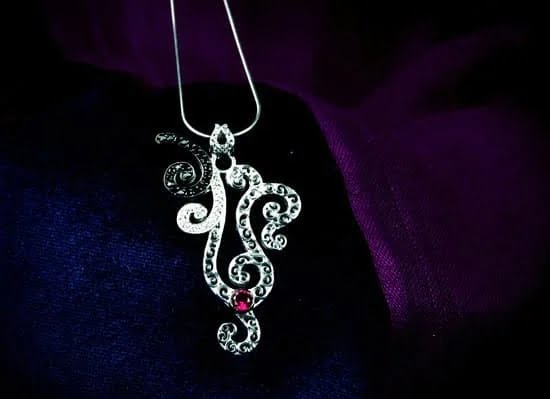Are you a jewelry maker looking to sell your handmade pieces but unsure of how to price them effectively? In this article, we will explore the intricacies of pricing handmade jewelry for sale. From understanding the costs involved in creating each piece to determining the desired profit margin, we will delve into the different factors and strategies that go into setting the right price for your unique creations.
When it comes to pricing handmade jewelry, it’s essential to have a clear grasp of the expenses involved in their creation. From the cost of materials and tools to overhead expenses like packaging and marketing, understanding these costs is crucial in determining a competitive yet profitable price for your pieces. We will discuss how to calculate these expenses accurately and factor them into your pricing strategy.
In addition to understanding costs, we will also explore other key factors that should be considered when pricing handmade jewelry for sale. Factors such as quality, materials used, and the time invested in crafting each piece all play a significant role in determining its value.
We will provide insights into how to account for these factors when establishing prices for your handmade jewelry, ensuring that they reflect both the effort put into creating them and their perceived worth in the market.
Factors to Consider
When pricing handmade jewelry for sale, it is important to consider various factors that contribute to the overall value of each piece. One crucial factor to take into account is the quality of the materials used.
High-quality materials not only add to the aesthetic appeal of the jewelry but also contribute to its durability and longevity. Whether using sterling silver, gemstones, or other precious materials, it is essential to factor in the cost of these materials when determining the selling price.
In addition to quality, the time invested in creating each piece should also be considered. Handmade jewelry often involves intricate designs and meticulous craftsmanship, which can be time-consuming. It’s important to calculate the value of your time and skill when setting prices for your jewelry items. Considerations such as labor costs, overhead expenses, and any specialized techniques or expertise involved in the creation process should all be factored into the pricing equation.
- Quality of materials used
- Time invested in creating each piece
- Labor costs and overhead expenses
Both quality and time invested play a significant role in establishing the value of handmade jewelry pieces. By carefully considering these factors, you can ensure that your pricing accurately reflects the worth of your creations while remaining competitive in the market. Keep in mind that transparency about your pricing methods can also help educate customers about the true value behind handmade jewelry items.
Market Research
When it comes to pricing handmade jewelry for sale, market research plays a crucial role in determining the right price point for your pieces. By analyzing the pricing of similar handmade jewelry items, you can gain valuable insights into how your competitors are pricing their products and what the market is willing to pay. This information will help you make informed decisions about setting the right prices for your own handmade jewelry.
One way to conduct market research is by visiting local craft fairs, artisan markets, and other events where handmade jewelry is being sold. Take note of the pricing range for different types of jewelry items, as well as the materials and designs that seem to command higher prices. Additionally, you can also look online on platforms like Etsy, Instagram, and other e-commerce sites to see how other makers are pricing their handmade jewelry.
Another important aspect of market research is understanding the target audience for your handmade jewelry. Consider who your ideal customers are and what they are willing to pay for unique, handcrafted pieces. By understanding the preferences and purchasing behavior of your target market, you can align your pricing strategy with their expectations.
Ultimately, conducting thorough market research will give you a better understanding of how to price handmade jewelry for sale. By analyzing the pricing of similar handmade jewelry items and understanding your target audience, you can make more informed decisions about setting competitive prices that reflect the value of your craft.
| Market Research Findings | Insights |
|---|---|
| Pricing range at local craft fairs | Helps in determining competitive pricing |
| Pricing on online platforms | Provides insight into e-commerce pricing trends |
| Target audience preferences | Informs pricing strategy based on customer expectations and willingness to pay |
Setting a Profit Margin
When it comes to pricing handmade jewelry for sale, setting a profit margin is a crucial step in the process. Determining the desired markup for your handmade jewelry involves carefully considering various factors to ensure that you are not only covering your costs but also making a reasonable profit. One important factor to consider when determining your desired markup is understanding the costs associated with creating your handmade jewelry pieces.
It’s essential to break down the expenses of handmade jewelry, including the cost of materials, tools, packaging, and overhead expenses such as utilities and marketing. By accurately understanding these costs, you can determine how much you need to charge for each piece in order to make a profit.
Additionally, factoring in the time invested in creating each piece is important when setting a profit margin. Your time and craftsmanship have value, and this should be reflected in the pricing of your handmade jewelry.
Another key consideration when determining the desired markup for your handmade jewelry is conducting market research. Analyzing the pricing of similar handmade jewelry items can give you insight into what customers are willing to pay and what competitors are charging. This information can help you set prices that are competitive yet profitable for your business.
Finally, it’s important to convey the worth of your handmade jewelry to customers. By focusing on the quality, uniqueness, and craftsmanship of your pieces, you can create a perceived value that justifies your pricing. This can also influence the desired markup you set for your handmade jewelry. Offering an exceptional product and effectively communicating its value can support higher price points and ultimately lead to increased sales and profitability.
| Factors | Considerations |
|---|---|
| Costs | Materials, tools, packaging; Time invested in creating each piece |
| Market Research | Analyzing pricing of similar items; Understanding customer willingness to pay |
| Perceived Value | Quality, uniqueness, and craftsmanship; Communicating value to customers |
The Importance of Perceived Value
When selling handmade jewelry, it is crucial to convey the value of your products to potential customers. This can be achieved through various strategies and approaches that highlight the unique qualities of your jewelry, making it stand out in the marketplace. Here are some effective methods for conveying the worth of your handmade jewelry to customers:
- Quality Materials: Emphasize the high-quality materials used in crafting your jewelry, such as genuine gemstones, precious metals, or other unique components. Highlighting the premium materials will help customers understand the value of your pieces.
- Craftsmanship and Artistry: Showcase the level of skill and craftsmanship that goes into creating each piece of handmade jewelry. Whether it’s intricate wirework, delicate bead weaving, or hand-sculpted metal designs, customers will appreciate the artistry behind your creations.
- Personal Touch: Communicate the personal touch and individuality that comes with handmade jewelry. Explain how each piece is unique and carries a special story, making it more meaningful than mass-produced items.
Additionally, providing detailed information about the creative process behind your jewelry can give customers insight into the time and effort invested in each piece. This transparency helps build trust and perceived value for your handmade jewelry.
Ultimately, conveying the worth of your handmade jewelry to customers involves effectively communicating its quality, craftsmanship, uniqueness, and personal touch. By highlighting these aspects, you can enhance the perceived value of your products and differentiate them in a competitive market.
Strategies for Pricing
When it comes to pricing handmade jewelry for sale, there are various approaches that artisans can take. Finding the right pricing strategy is crucial in ensuring that your jewelry sells well and brings in a good profit. Here are some different approaches for pricing handmade jewelry:
Cost-Plus Pricing
One common approach to pricing handmade jewelry is cost-plus pricing. This method involves calculating the total cost of creating the jewelry, including materials, labor, and any other expenses, and then adding a markup to determine the selling price. For example, if it costs $20 to make a piece of jewelry and you want to make a 50% profit, you would sell it for $30.
Market-Oriented Pricing
Another approach is market-oriented pricing, which involves setting prices based on what similar handmade jewelry items are selling for in the market. This requires conducting thorough market research to understand the pricing trends in the industry and positioning your products accordingly. By analyzing the pricing of similar items, you can determine where your products fit within the market and set competitive prices.
Value-Based Pricing
Value-based pricing takes into consideration the perceived value of your handmade jewelry by customers. This approach focuses on understanding what customers are willing to pay for your unique and quality pieces. It involves assessing the craftsmanship, design, and overall appeal of your jewelry and using that information to set prices that reflect its value in the eyes of your target market.
It’s important for artisans to consider these various approaches when determining how to price their handmade jewelry for sale. Each method has its benefits and drawbacks, so it’s essential to weigh these factors against your business goals and customer expectations before settling on a final pricing strategy.
Pricing for Different Sales Channels
When it comes to selling handmade jewelry, one important aspect to consider is the pricing strategy for different sales channels. Whether you are selling your jewelry online, through retail stores, or via wholesale platforms, it is essential to adjust your prices accordingly. Each sales channel has its own set of costs and considerations that can impact the pricing of your handmade jewelry.
Online Sales
Selling handmade jewelry online often involves additional costs such as shipping, packaging, and online marketplace fees. When determining the price for your handmade jewelry in an online setting, it’s important to factor in these additional expenses. Additionally, consider the competitive nature of online marketplaces and how pricing your jewelry competitively can help attract more customers.
Retail Sales
For retail sales, you may need to account for higher overhead costs, such as rent for a physical store or consignment fees if selling through a third-party retailer. The pricing of your handmade jewelry in a retail setting should reflect these added expenses while still remaining attractive to potential buyers.
Wholesale Platforms
When selling handmade jewelry through wholesale platforms, you will likely be offering your products at a discounted price to retailers who will then sell them at a higher markup. Therefore, it’s important to calculate your wholesale prices in a way that allows both you and the retailer to make a profit. Consider factors such as bulk pricing discounts and minimum order requirements when determining the wholesale pricing of your handmade jewelry.
By adjusting your prices for each sales channel based on these considerations, you can ensure that your handmade jewelry remains competitive and profitable across various platforms. Regularly reviewing and modifying your pricing strategy for each sales channel is essential to maximizing sales and profit in the long run.
Reevaluating and Adjusting
In conclusion, setting the right price for handmade jewelry is crucial to ensure that you are able to cover your costs and make a profit. Understanding the costs involved in making each piece, including materials, labor, and overhead expenses, is essential in determining the base price for your jewelry.
Additionally, considering the quality of your work, the materials used, and the time invested in creating each piece will help you determine a fair price that reflects the value of your handmade jewelry.
Market research plays a key role in pricing handmade jewelry for sale. Analyzing the pricing of similar items in the market will give you a better idea of what customers are willing to pay for your pieces. This information will help you set a competitive yet profitable price for your jewelry.
It’s also important to regularly reevaluate and adjust your pricing strategy for handmade jewelry. Monitoring sales and customer feedback will provide valuable insights into whether your pricing is effective or needs modification. By staying flexible and willing to make changes as needed, you can maximize sales and profit for your handmade jewelry business. Overall, understanding how to price handmade jewelry for sale involves a combination of financial analysis, market research, and adaptability to meet customer demand while ensuring profitability.
Frequently Asked Questions
What DIY Jewelry Sells the Most?
DIY jewelry that sells the most often includes personalized and customizable pieces. People love unique jewelry that reflects their own style and personality, so items like birthstone necklaces, initial bracelets, and name engraved rings are popular.
How Can I Sell My Homemade Jewelry?
One way to sell homemade jewelry is by setting up an online store on platforms like Etsy or Shopify. Utilizing social media to showcase your creations can also attract potential customers. Additionally, participating in local craft fairs or markets can help you reach a wider audience.
How Do You Charge for Handmade Items?
When charging for handmade items, it’s important to consider the cost of materials, labor, and any additional expenses incurred during the production process. Setting a fair price that covers these costs while also reflecting the value of your craftsmanship is essential for sustaining your business in the long run.

Welcome to my jewelry blog! My name is Sarah and I am the owner of this blog.
I love making jewelry and sharing my creations with others.
So whether you’re someone who loves wearing jewelry yourself or simply enjoys learning about it, be sure to check out my blog for insightful posts on everything related to this exciting topic!





